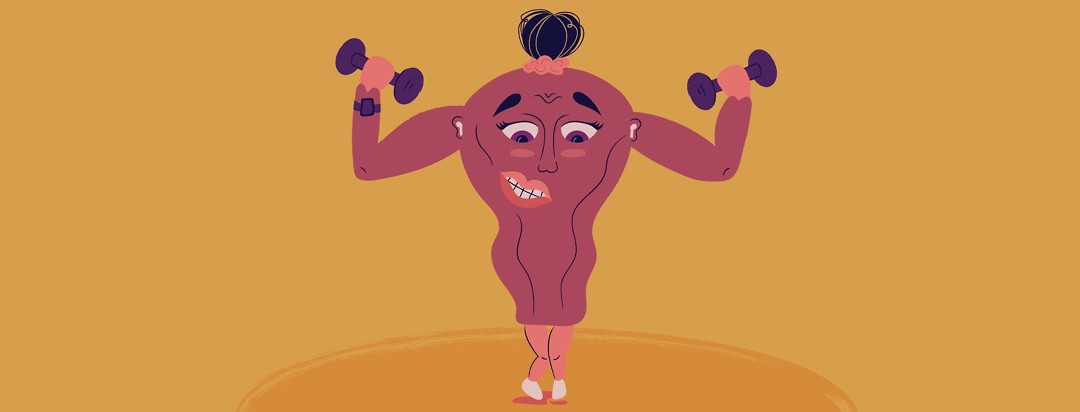Endometriosis and Strenuous Exercise
Exercise is part of the solution for nearly every medical diagnosis - so why was strenuous exercise making my endometriosis worse?
I joined a CrossFit gym a few years back, and started lifting—heavy. I liked building muscle, but I didn’t like that I would come home to find that I had been spotting, as in bleeding, on the days that I worked out especially hard.
Curious about the connection between strenuous exercise and endometriosis, I reached out to Dr. Kelly Wright, a gynecologist, and assistant professor of obstetrics and gynecology at Cedars-Sinai in Los Angeles.1 I asked her the most basic question first: Is there a link between pushing yourself in workouts and a worsening of endo symptoms?
Does exercise worsen endo symptoms?
“There is no link that we know of,” she tells me. “We know that exercise and other things that make your body feel good—eating well, massage, acupuncture—can all help.” She tells me that endometriosis, like most medical conditions, is helped by exercise. “Exercise helps modulate pain,” she says. In other words, working out can keep your endo pain in check.
She explains further: “If you are someone who can run an ultra-marathon, then your body knows how to handle stress and pain. That type of exercise decreases the body’s pain response to any stimuli.” Exercise will change how you experience pain. It changes the extent to which you tolerate pain. But, she’s quick to add: “It doesn’t change the disease. In the case of endo, it wouldn’t change how much endo you have.”
How exercise affects the uterus
Then she switches gears a bit, and explains further. “Your uterus is a muscle. It can sense dehydration. It can cramp like other muscles. When you do strenuous exercise, you can cause your uterus to cramp, and this causes the spotting.” Wow. I’m embarrassed that I hadn’t known that the uterus was a muscle. Then again, I never had a health or science class cover this material - which would have been great to know, as a woman. But, I know this now, and am grateful.
Then Dr. Wright addresses the CrossFit. “Take something like CrossFit. CrossFit is lots of motion, so even in that friction - that motion can result in some spotting.” This makes sense. She continues, “Other patients have cramping after exercise. That can just be a normal uterine muscle response.”
The connection that I had noticed years ago is completely accurate, but not for the reasons I understood. Wright is able to help me see that strenuous exercise isn’t making my endometriosis worse - exercise is not causing the endometriosis to grow faster or in greater amounts.
Rather, the exercise was simply putting a strain on the muscles of the uterus, which form a lining of blood and mucosal tissue every month. Agitation of those muscles disrupts that natural process.
What you can do
Wright suggests thinking about and treating the uterus like a muscle. Proper hydration and the use of electrolytes help alleviate cramping. She sums it up with this: “Your uterus will respond the same way as your other muscles.”

Join the conversation